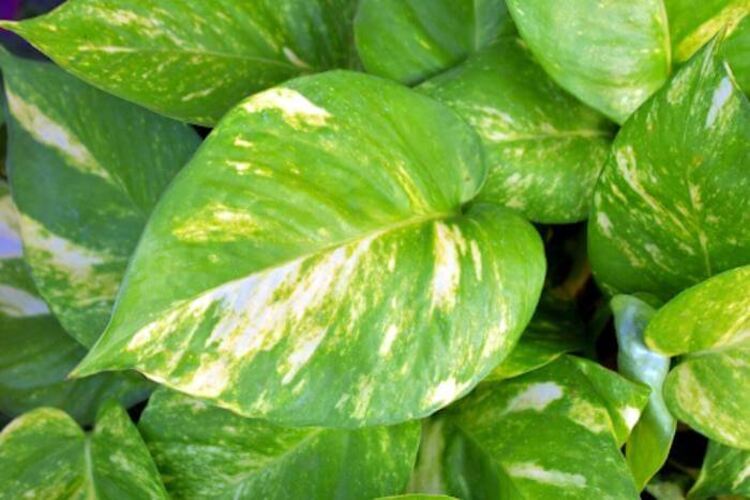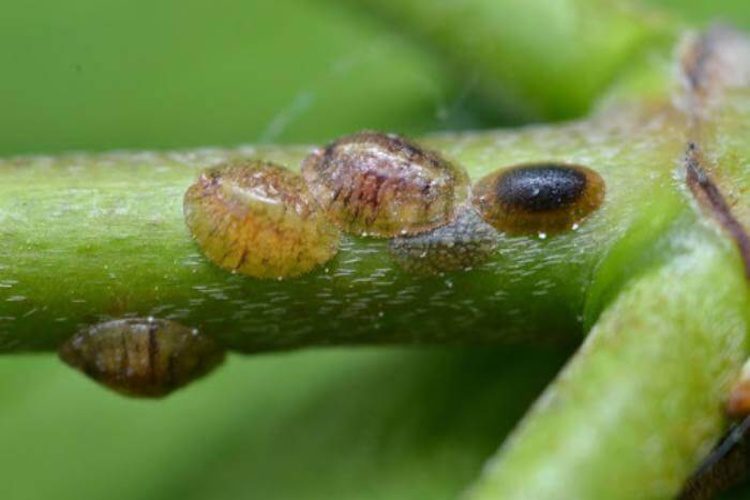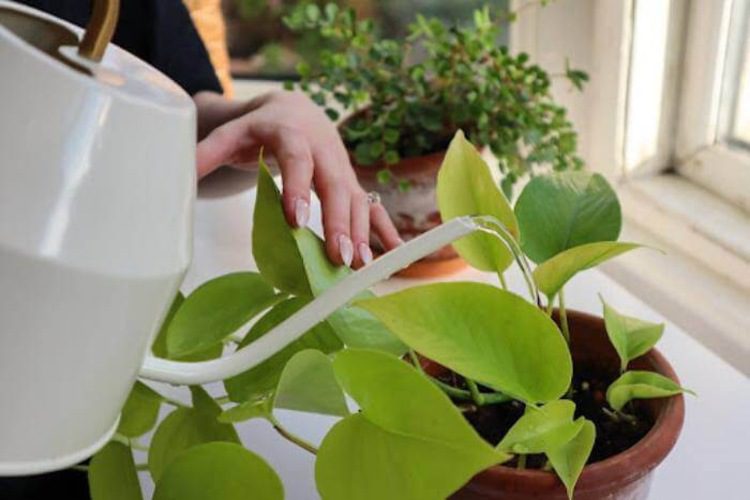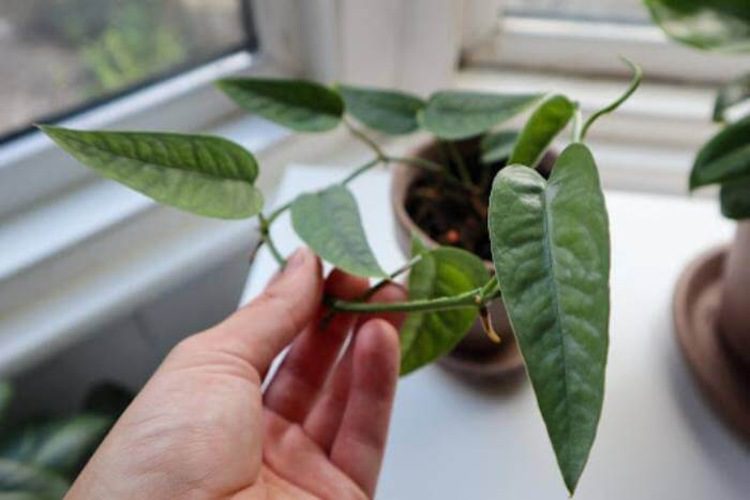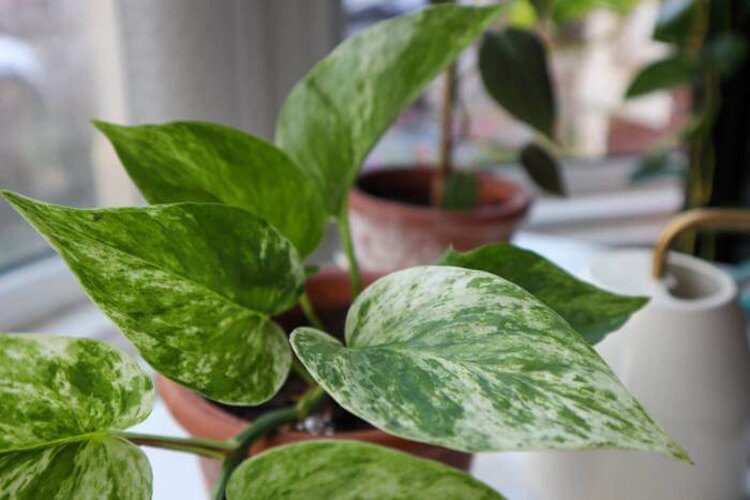Emerald Pothos Care: Stunning Green For Indoor Plants

Emerald Pothos is a tropical plant that is not too difficult to care for. It can be said that this pothos is one of the most loved houseplants, as it possesses a mysterious variety and vivid, glossy green leaves. Despite seeming identical to other plants in the Pothos genus, this pothos is distinguished from them by one distinctive characteristic.
Evidently, this mixture of light and dark green patterns on its leaves, which gives the impression that they have been watercolour-painted, is its trademark variegation.
| Scientific Name | Epipremnum aureum “Emerald” |
| Common Name | Emerald Pothos |
| Family | Araceae |
| Origin | French |
| Plant Type | Tropical Houseplant |
| Bloom Time | Spring, summer |
| Soil | Loose and light, nutrient-rich potting soil |
| Water | Low, Moderate |
| Temperature | 55-90°F |
| Sunlight | Medium to bright indirect sunlight |
| Toxicity | Poisonous |
About Emerald Pothos

An eye-catching and popular indoor plant, the Emerald Pothos features numerous heart-shaped leaves with subtle pale and dark green variegation. It is popular for the home since it is easy to maintain and propagate and grows at a medium-to-quick rate. Like other Pothos species, this cultivar is a delightful treat to have in the house. This gorgeous plant is actually a pothos cultivar of the N’Joy sort, which is smaller and denser than typical pothos, as indicated by its botanical name, Epipremnum aureum Emerald. It can still trail up to 10 feet in ideal growing conditions.
Due to their attractive trailing growth patterns, this kind of pothos is generally cultivated in hanging baskets. This pothos has a striking variegation pattern, with darker veins in the centre and lighter veins in the margins. However, the irregularity of their markings gives each leaf a distinct appearance. This patterning is what makes the Emerald so sought-after, despite the fact that these plants are commonly mistaken for other Pothos species, such as the Silver Ann Pothos.
The Silver Ann Pothos is another popular pothos cultivar that has similar variegation to the Emerald Pothos. However, the Silver Ann Pothos has more pronounced white markings on its leaves, and the white markings are more evenly distributed throughout the leaf. The Silver Ann Pothos is also slightly smaller than the Emerald Pothos.
Emerald Pothos Care
Emerald pothos require low maintenance and simple care. It prefers moderate watering, warm temperatures, high humidity, and indirect sunlight. Despite not always needing fertilizer, the plant needs nutrient-rich soil. It can easily be propagated by division and is pest- and disease-resistant, with the exception of root rot.
Light requirement
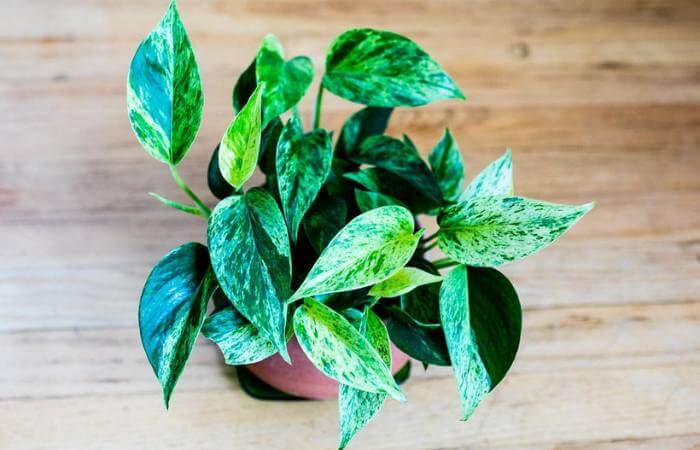
The plant’s stunning light green variegation contrasts beautifully with its dark green leaves. As a result, it needs more bright light than other plants with variegated green leaves. This is because the areas with variegation have a lower capacity to absorb light or take part in photosynthesis, which is how plants make their own food.
In dark environments, the plant adjusts and tries to get as much light as it can, losing its exquisite variegation in the process. Maybe you will be confused if this plant can have direct sunlight for growth. But, you ought to put it somewhere with adequate, bright indirect light for best growth, not direct sunlight.
Soil
This kind of pothos dislikes being overwatered, so it needs soil that drains properly. You can also use regular potting soil that you already have at home and add perlite to it to improve drainage. Generally speaking, the soil must be able to retain enough water to keep the plant well hydrated.
To avoid living in damp conditions, which can cause issues like root rot, the plant must also be able to drain excess water. Be cautious around soils that are heavy or that retain a lot of moisture. The plant won’t like extremely quick-draining soil that dries out too rapidly, though. Balance is crucial in this situation.
Watering
Emerald Pothos likes moist soil when it is actively growing in the spring and summer. But be careful not to overwater it. The plant’s root system is not very deep. Because of this, it doesn’t take much water to reach them. You might also consider using a wide but shallow container to reduce the amount of soil. As a result, it is less likely that the roots will spend too much time in wet soil.
When they receive too much water, the leaves become yellow. They will probably wilt. On the other side, a lack of moisture will result in the leaves drying out, drooping, and developing brown edges. If you observe any, make an immediate modification to your watering schedule.
Fertilizer
In order for Emerald Pothos to grow, fertilizer is not usually required. Adding just a layer of compost once a year in the spring will actually allow it to grow reasonably nicely. In order to maximize the plant’s growth, the majority of growers feed it.
A balanced liquid fertilizer that has been diluted to half intensity can be used once per month. Even though my buddy only gives her plant a one-to-three-month feeding, it still looks great. Simply provide it with food throughout the spring and summer, in any case. Fertilizing doesn’t happen in the cold.
Temperature
A wide range of temperatures won’t harm the plant. If you keep it between 55 and 90 degrees Fahrenheit, there won’t be any issues. The optimal temperature for growth is in the middle of the range, between 70 and 80 degrees. In this setting, it develops and thrives the most. The plant is not drawn to extremes. Therefore, be careful not to leave it in overly warm regions. That will, however, be able to bear it to some extent.
Humidity
Due to its tropical habitat, this plant prefers high humidity levels. You should strive for a 50% to 70% indoor humidity level for the greatest growth. The plant, however, is unaffected by ambient room temperature. Everything will be fine as long as the humidity is kept at 40% or higher. You should exercise greater caution if you live in a dry climate where the humidity regularly falls into the 30s or lower.
Repotting
The plants won’t need to be replanted annually. It usually takes 2 or 3 years before you need to repot a plant, depending on how quickly it grows. In a perfect world, it would be close to the lower end of that range. The best seasons to repot your plant are in the spring or early summer. It is best to finish it in the spring or summer as opposed to the fall or winter. As a result, after being transplanted, it might grow more quickly.
Read more: Harlequin Pothos Care: The Mysterious Plant May You Know
Emerald Pothos Propagation

Given how stunning the plant is, it would be necessary to propagate it. In particular, given how straightforward it is to employ stem cuttings for this. By doing this, you’ll be able to have a new plant in case your main one is damaged. Additionally, it makes a great gift for friends who love gardening. Stem cuttings are the simplest method of Pothos Propagation. Air layering is one of many additional techniques that are effective as well.
This is the procedure:
Step 1: Take a healthy stem that is 4 to 6 inches long and has at least 2 to 3 leaves on it.
Step 2: To see the leaf nodes, remove the bottom leaves. The new roots will sprout from these. So you should either put them in the soil or submerge them in water.
Step 3: You must choose whether to propagate the plant in soil or water. They both function. But each has a unique procedure. Therefore, what matters most is what you are better at or prefer.
Emerald Pothos Problems
Although this kind of indoor plant is easy to care for, it still faces some of the same problems as other Pothos varieties.
Spider mites
Especially on the Emerald vines, spider mites are a prevalent issue, along with mealy bugs. Spider mite damage first appears as little brown or yellow patches on the foliage of your plants. You can also observe that the growth of your crop has slowed or ceased.
To get rid of the spiders in this situation, you should wash the Emerald leaves and foliage with a garden hose, pressure washer, or dishwashing hose. As an alternative, you could apply insecticidal soap or neem oil to the leaves, being sure to cover the underside.
Root Rot
This is the most frequent reason for the death of your plant, just as with Golden Pothos or any other pothos. The two most frequent causes of root rot are some indoor gardeners who either overwater their plants or forget to provide adequate drainage.
In these circumstances, you could utilize porous containers (such as clay, unglazed ceramic, and concrete) to let extra moisture escape through the container’s edges. Give your plant a well-aerated soil blend so that its roots can expand and breathe easily.
Emerald Pothos vs. Global Green Pothos
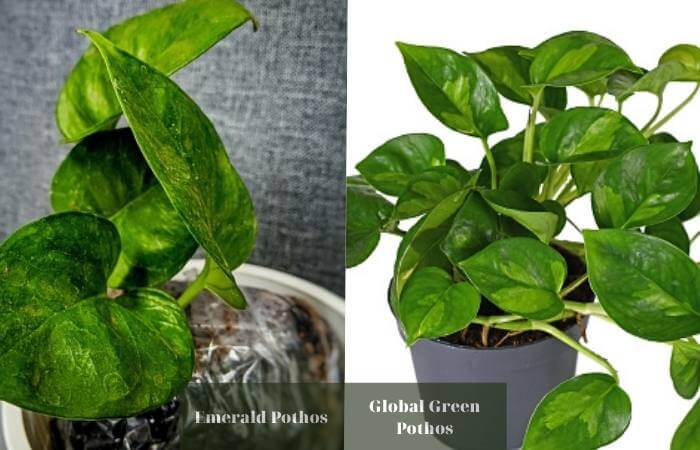
Given that they both have distinctive heart-shaped leaves and the tendency to grow in a trailing manner, it is true that they frequently get confused with one another. In contrast to the Emerald’s more supple hue, the Global Green Pothos‘ patterning also features more striking variegation. Besides, The Emerald has leaves with a dark green center and lighter edges, whereas the Global Green has leaves with light centers and dark edges. This is the main difference between the two plants. They are, in essence, the opposite of one another.
Conclusion
Emerald Pothos is a distinctive indoor ornamental plant that has beautiful variegation. You will have no issue cultivating this ideal houseplant if you adhere to our care recommendations!
FAQs



